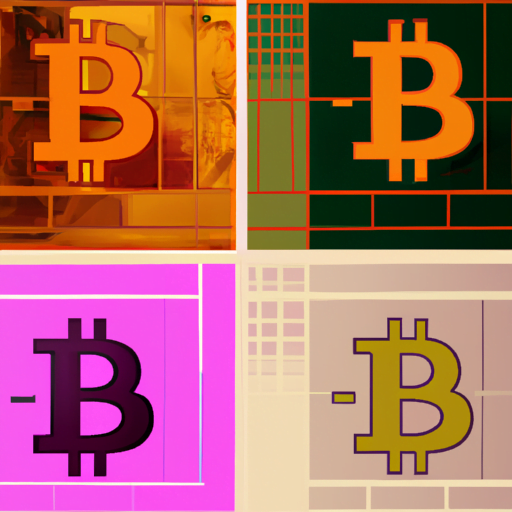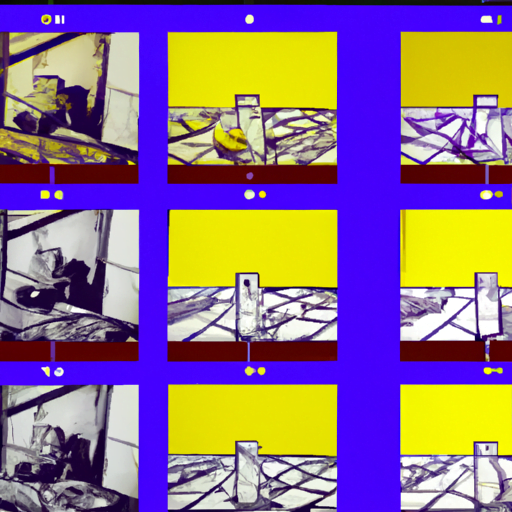-
Table of Contents
- The Impact of Cryptocurrency on Graphic Design Transactions
- 1. Introduction to Cryptocurrency
- 2. Benefits of Cryptocurrency in Graphic Design Transactions
- 2.1. Security and Privacy
- 2.2. Global Accessibility
- 2.3. Faster Transactions
- 2.4. Lower Transaction Fees
- 3. Challenges of Cryptocurrency in Graphic Design Transactions
- 3.1. Volatility
- 3.2. Limited Adoption
- 3.3. Technical Knowledge
- 4. Case Studies: Cryptocurrency in Graphic Design Transactions
- 4.1. Designhill
- 4.2. Cryptocurrency Logos
- 5. Future Prospects and Trends
- 5.1. Stablecoin Integration
- 5.2. Smart Contracts
- 5.3. Increased Adoption and Education
- 6. Conclusion
The Impact of Cryptocurrency on Graphic Design Transactions

Cryptocurrency has revolutionized various industries, and graphic design is no exception. With its decentralized nature and secure transactions, cryptocurrency has the potential to transform the way graphic designers conduct business. In this article, we will explore the impact of cryptocurrency on graphic design transactions, examining its benefits, challenges, and future prospects.
1. Introduction to Cryptocurrency
Cryptocurrency is a digital or virtual form of currency that uses cryptography for secure financial transactions, control the creation of additional units, and verify the transfer of assets. Bitcoin, the first and most well-known cryptocurrency, was introduced in 2009 by an anonymous person or group of people using the pseudonym Satoshi Nakamoto.
Since then, numerous cryptocurrencies have emerged, each with its unique features and applications. Some popular cryptocurrencies include Ethereum, Ripple, Litecoin, and many more. These digital currencies operate on blockchain technology, a decentralized and transparent ledger that records all transactions.
2. Benefits of Cryptocurrency in Graphic Design Transactions
The integration of cryptocurrency into graphic design transactions offers several advantages:
2.1. Security and Privacy
Cryptocurrency transactions are highly secure due to the cryptographic algorithms used to protect them. Unlike traditional payment methods, such as credit cards or bank transfers, cryptocurrency transactions do not require the disclosure of personal information. This anonymity ensures the privacy of both the buyer and the seller.
2.2. Global Accessibility
Graphic designers often work with clients from different parts of the world. Cryptocurrency eliminates the barriers associated with traditional banking systems, making cross-border transactions faster and more accessible. With cryptocurrency, designers can receive payments from clients in any country without worrying about currency conversions or international transaction fees.
2.3. Faster Transactions
Traditional payment methods can be slow, especially when dealing with international transfers. Cryptocurrency transactions, on the other hand, are processed almost instantly. This speed allows graphic designers to receive payments promptly, ensuring a smoother workflow and improved cash flow.
2.4. Lower Transaction Fees
Graphic designers often face high transaction fees when receiving payments through traditional methods. Cryptocurrency transactions typically have lower fees compared to traditional banking systems. This reduction in fees can significantly benefit designers, especially those who work on smaller projects with tighter budgets.
3. Challenges of Cryptocurrency in Graphic Design Transactions
While cryptocurrency offers numerous benefits, it also presents some challenges that graphic designers need to consider:
3.1. Volatility
Cryptocurrency markets are known for their volatility. The value of cryptocurrencies can fluctuate dramatically within a short period. This volatility poses a risk for graphic designers who rely on stable income. To mitigate this risk, designers may need to convert their cryptocurrency earnings into fiat currency immediately or use stablecoins, which are cryptocurrencies pegged to a stable asset like the US dollar.
3.2. Limited Adoption
Although cryptocurrency has gained popularity in recent years, it is still not widely adopted in the graphic design industry. Many clients and designers are unfamiliar with cryptocurrencies and may be hesitant to use them for transactions. This limited adoption can create challenges when trying to convince clients to pay with cryptocurrency.
3.3. Technical Knowledge
Using cryptocurrency requires a certain level of technical knowledge. Graphic designers who are not familiar with blockchain technology and cryptocurrency wallets may find it challenging to navigate the process. Additionally, clients may also face difficulties in understanding how to make payments using cryptocurrency, leading to potential complications in transactions.
4. Case Studies: Cryptocurrency in Graphic Design Transactions
Several case studies highlight the successful integration of cryptocurrency into graphic design transactions:
4.1. Designhill
Designhill, a popular graphic design marketplace, started accepting Bitcoin as a payment method in 2017. This move allowed designers to receive payments in Bitcoin, providing them with an alternative to traditional payment methods. Designhill’s adoption of cryptocurrency showcased the potential for increased security and accessibility in graphic design transactions.
4.2. Cryptocurrency Logos
Cryptocurrency logos have become a niche specialization for graphic designers. As the popularity of cryptocurrencies grew, the demand for unique and visually appealing logos increased. Graphic designers who specialize in creating cryptocurrency logos have found a niche market and have the opportunity to receive payments in cryptocurrency, further promoting the use of digital currencies in the industry.
5. Future Prospects and Trends
The future of cryptocurrency in graphic design transactions looks promising. As the technology becomes more mainstream and user-friendly, more designers and clients are likely to embrace it. Some potential future prospects and trends include:
5.1. Stablecoin Integration
Stablecoins, as mentioned earlier, are cryptocurrencies pegged to stable assets like fiat currencies. The integration of stablecoins into graphic design transactions can help mitigate the volatility associated with traditional cryptocurrencies. Designers can receive payments in stablecoins, ensuring a more stable income stream.
5.2. Smart Contracts
Smart contracts are self-executing contracts with the terms of the agreement directly written into code. They automatically execute transactions when predefined conditions are met. The use of smart contracts in graphic design transactions can streamline the payment process, ensuring that designers receive payments automatically upon project completion.
5.3. Increased Adoption and Education
As more individuals and businesses become familiar with cryptocurrencies, the adoption rate in the graphic design industry is likely to increase. Education initiatives and resources can help bridge the knowledge gap and encourage designers and clients to embrace cryptocurrency as a viable payment method.
6. Conclusion
Cryptocurrency has the potential to revolutionize graphic design transactions, offering increased security, global accessibility, faster transactions, and lower fees. However, challenges such as volatility, limited adoption, and technical knowledge need to be addressed for widespread integration. With the right education and technological advancements, cryptocurrency can become a mainstream payment method in the graphic design industry, benefiting both designers and clients alike.
As the world becomes more digital, the integration of cryptocurrency into graphic design transactions aligns with the evolving nature of the industry. By embracing this technology, graphic designers can stay ahead of the curve and adapt to the changing landscape of the digital economy.







